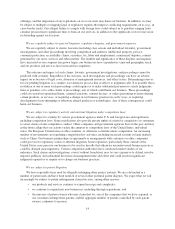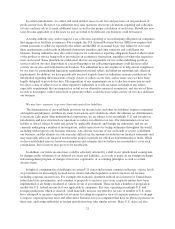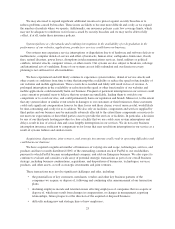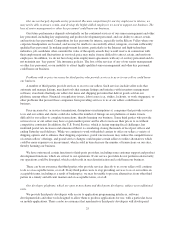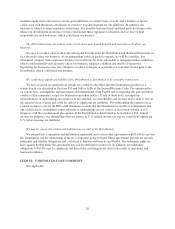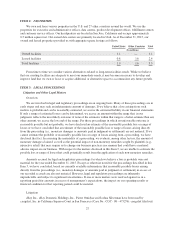eBay 2015 Annual Report Download - page 36
Download and view the complete annual report
Please find page 36 of the 2015 eBay annual report below. You can navigate through the pages in the report by either clicking on the pages listed below, or by using the keyword search tool below to find specific information within the annual report.• diversion of management time and a shift of focus from operating the businesses to the transaction, and
in the case of an acquisition, integration and administration;
• the need to provide transition services to a disposed of company, which may result in the diversion of
resources and focus;
• the need to integrate the operations, systems (including accounting, management, information, human
resource and other administrative systems), technologies, products and personnel of each acquired
company, which is an inherently risky and potentially lengthy and costly process;
• the inefficiencies and lack of control that may result if such integration is delayed or not implemented,
and unforeseen difficulties and expenditures that may arise as a result;
• the need to implement or improve controls, procedures and policies appropriate for a larger public
company at companies that prior to acquisition may have lacked such controls, procedures and policies
or whose controls, procedures and policies did not meet applicable legal and other standards;
• risks associated with our expansion into new international markets;
• derivative lawsuits resulting from the acquisition or disposition;
• liability for activities of the acquired or disposed of company before the transaction, including
intellectual property and other litigation claims or disputes, violations of laws, rules and regulations,
commercial disputes, tax liabilities and other known and unknown liabilities and, in the case of
dispositions, liabilities to the acquirors of those businesses under contractual provisions such as
representations, warranties and indemnities;
• the potential loss of key employees following the transaction;
• the acquisition of new customer and employee personal information by us or a third party acquiring
assets or businesses from us, which in and of itself may require regulatory approval and or additional
controls, policies and procedures and subject us to additional exposure; and
• our dependence on the acquired business’ accounting, financial reporting, operating metrics and similar
systems, controls and processes and the risk that errors or irregularities in those systems, controls and
processes will lead to errors in our consolidated financial statements or make it more difficult to
manage the acquired business.
At any given time we may be engaged in discussions or negotiations with respect to one or more of these
types of transactions and any of these transactions could be material to our financial condition and results of
operations. In addition, it may take us longer than expected to fully realize the anticipated benefits of these
transactions, and those benefits may ultimately be smaller than anticipated or may not be realized at all, which
could adversely affect our business and operating results. Any acquisitions or dispositions may also require us to
issue additional equity securities, spend our cash, or incur debt (and increased interest expense), liabilities, and
amortization expenses related to intangible assets or write-offs of goodwill, which could adversely affect our
results of operations and dilute the economic and voting rights of our stockholders.
We have made certain investments, including through joint ventures, in which we have a minority equity
interest and/or lack management and operational control. The controlling joint venture partner in a joint venture
may have business interests, strategies, or goals that are inconsistent with ours, and business decisions or other
actions or omissions of the controlling joint venture partner or the joint venture company may result in harm to
our reputation or adversely affect the value of our investment in the joint venture. Our strategic investments may
also expose us to additional risks. Any circumstances, which may be out of our control, that adversely affect the
value of our investments, or cost resulting from regulatory action or lawsuits in connection with our investments,
could harm our business or negatively impact our financial results.
24


